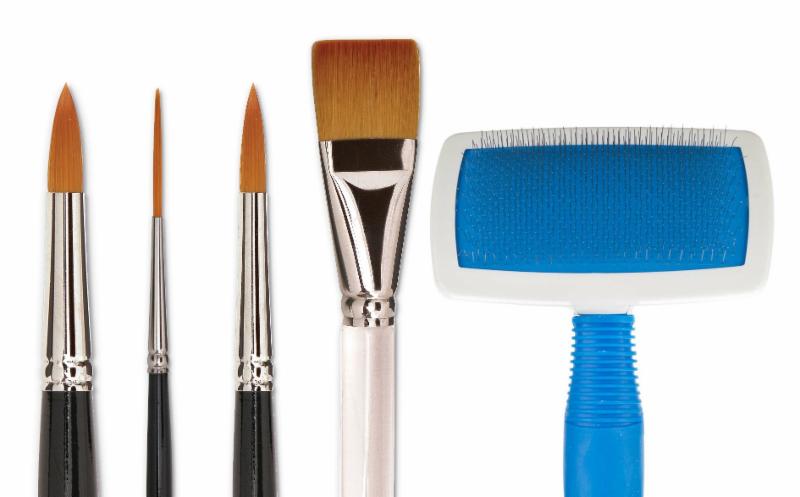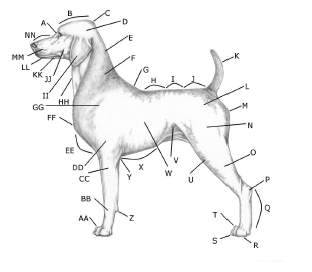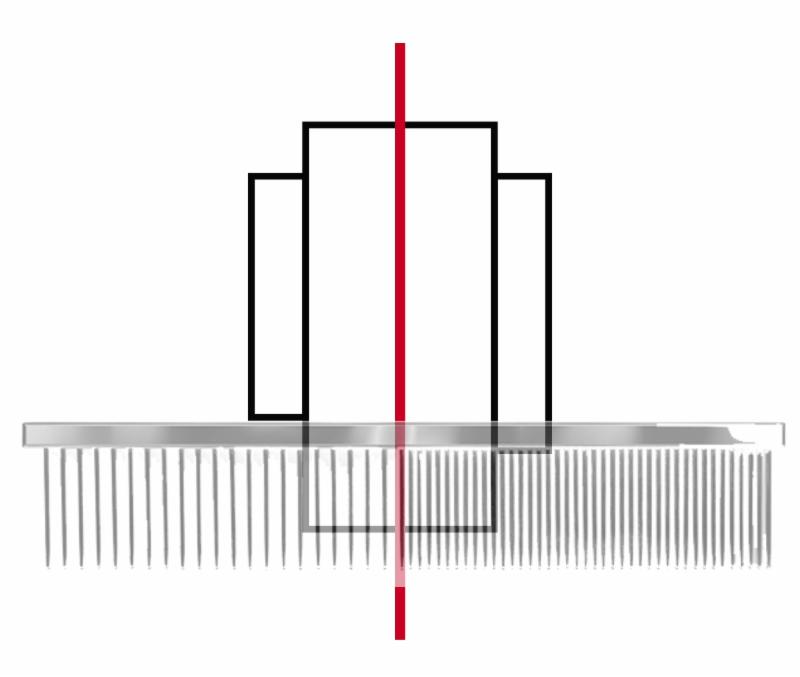When you attend trade shows and clinics, preparing in advance can help you make the most of this experience. Seminars are a great way to improve your skills and recharge your batteries. Meeting your mentors and soaking up their knowledge is a fantastic opportunity, and if you can see and hear them in action, it maximizes the experience. When you know what you need and what you hope to get out of the session, you can better prepare yourself to squeeze out as much as you can from your time together.
 1. Step into the session with a very open mind.
1. Step into the session with a very open mind.
If you are young and fresh to the industry, the amount of information that you get can be intimidating. Listen, take notes, and soak up every bit of knowledge that you can. Sometimes that may mean suspending what you know in order to make room for something new. Trying new techniques or ideas can be uncomfortable just because you’ve never tried it before. Keeping an open mind enables you to break from your routine to get different results. With time and practice, the awkwardness goes away and you become more efficient. Remember: having more tools, techniques, and knowledge allows you to have multiple approaches to a problem.
2. Make efficient use of the time available.
Many trainers at these sessions have limited time. They are often rushing from one obligation to another – judging competitions, speaking in seminars, or providing hands-on clinics. If they can, many will take the time to answer your questions. If you know what you need to ask, it helps you make the best use of the brief time you may have together. Be prepared – write down your questions in advance so you don’t forget something important or stumble over your words. Being ready to participate in the learning experience helps you make the best use of the session – and the presenter will respect you for it.
3. Don’t be nervous – plan ahead.
With so much to see and do at trade shows, it’s easy to feel overwhelmed. Break out the catalog and study the floor plan before you arrive. Map out your plan of attack to make sure you get to everything you need to see. Some shows have free apps you can download to help make the most out of your experience. Know the schedule of events so you don’t miss that speaker you’ve been hoping to see. Sometimes it’s good to go to shows like this with a friend – divide and conquer, then compare notes later.
 As your knowledge and skills advance, the clinics won’t be as daunting. They will become a great way for you to fine-tune your skills. You can begin to network and exchange thoughts with others in the industry who can provide insight when you need it. Plus, these types of functions are a great way to invigorate your career.
As your knowledge and skills advance, the clinics won’t be as daunting. They will become a great way for you to fine-tune your skills. You can begin to network and exchange thoughts with others in the industry who can provide insight when you need it. Plus, these types of functions are a great way to invigorate your career.
These principles remain valid for many forms of advanced learning in the pet grooming industry. Maybe you don’t have the opportunity to do a hands-on training session. There is a wealth of information to learn from these all-star pet stylists. You might be in the audience at a trade show, pet grooming competition or watching a grooming video lesson featuring one of these top stylists. The better you can execute the core skills with your everyday grooming, the easier it will be to successfully transfer their lessons to your own grooming table.
If you are not as accomplished as these award-winning and highly successful pet groomers are – take note. You can learn a lot from their well-developed skills. Learning new skills, tips, and tricks make grooming pets all that more fun!
Click here to register to see Pina Pinkusevich in Grand Rapids, Michigan.
Happy Trimming!
~ Melissa
P.S.
Do you have any tips to share? Jump over to the Learn2GroomDogs Facebook page and tell us.






 When I was a contest groomer, I always did my Poodle cuffs by hand. I would brush the coat down then give it a quick fluff with my comb. Once it was fluffed, I’d glide a long straight shear in and set the lower edge. Then I’d re-fluff and grab my long curved shears to round and bevel the edges. It was time-consuming.
When I was a contest groomer, I always did my Poodle cuffs by hand. I would brush the coat down then give it a quick fluff with my comb. Once it was fluffed, I’d glide a long straight shear in and set the lower edge. Then I’d re-fluff and grab my long curved shears to round and bevel the edges. It was time-consuming. Once my cuff was set, I would neaten and finish the entire leg with shears, smoothing out my guard comb work.
Once my cuff was set, I would neaten and finish the entire leg with shears, smoothing out my guard comb work. Stop and hold the foot with your fingers coming to rest right at the clipped cuff line. While maintaining your hold on the foot, gently trim at right angles around the cuff with the #30 or #40 blade. Simply touch the coat at the edge line you want to set.
Stop and hold the foot with your fingers coming to rest right at the clipped cuff line. While maintaining your hold on the foot, gently trim at right angles around the cuff with the #30 or #40 blade. Simply touch the coat at the edge line you want to set.



 Getting Through the Dogs
Getting Through the Dogs After the Holiday?
After the Holiday? I saw this quote recently and it really got me thinking.
I saw this quote recently and it really got me thinking.
 If you ask people in our industry if they think grooming and styling pets is an art form or a skilled trade, most would say that it’s a little of both. I agree. When you watch members of GroomTeam USA at work, their efforts are definitely works of art. Skills like theirs take years to develop. Today, I want to talk about one aspect of that development: learning to see like an artist.
If you ask people in our industry if they think grooming and styling pets is an art form or a skilled trade, most would say that it’s a little of both. I agree. When you watch members of GroomTeam USA at work, their efforts are definitely works of art. Skills like theirs take years to develop. Today, I want to talk about one aspect of that development: learning to see like an artist. So I’m staring at the page… what am I looking at? What am I looking for? When I’m staring at that blank sheet of paper, I’m seeing what I will put there. As I stare into that whiteness, I’m watching the colors and lines take shape in my mind and align themselves on the page. It’s like my mind has produced a transparency of the finished product and has mentally created an overlay onto the page. All I have to do is put the marks on the paper. If I’m sculpting, I’m staring at the lump of rock and seeing the shape of what I want to create in the stone. All I have to do is remove all the stuff around it and let it out.
So I’m staring at the page… what am I looking at? What am I looking for? When I’m staring at that blank sheet of paper, I’m seeing what I will put there. As I stare into that whiteness, I’m watching the colors and lines take shape in my mind and align themselves on the page. It’s like my mind has produced a transparency of the finished product and has mentally created an overlay onto the page. All I have to do is put the marks on the paper. If I’m sculpting, I’m staring at the lump of rock and seeing the shape of what I want to create in the stone. All I have to do is remove all the stuff around it and let it out. Trim styles are all about anatomy. Groomers need to know their breed standards and to know them they need to understand anatomy. If you’re a visual learner, get out your reference material and study the images until you can see them on any dog that walks into your salon. If you’re a tactile student and learn by doing, get those books out and learn to find reference points on dogs through your sense of touch. Feel where the point of rump is, the point of shoulder, and the barrel of the chest. If you can’t see them, learn your anatomy reference points by touch. Then learn to do both. Developing your knowledge base creates reliable instincts and reflexes.
Trim styles are all about anatomy. Groomers need to know their breed standards and to know them they need to understand anatomy. If you’re a visual learner, get out your reference material and study the images until you can see them on any dog that walks into your salon. If you’re a tactile student and learn by doing, get those books out and learn to find reference points on dogs through your sense of touch. Feel where the point of rump is, the point of shoulder, and the barrel of the chest. If you can’t see them, learn your anatomy reference points by touch. Then learn to do both. Developing your knowledge base creates reliable instincts and reflexes.
 Have you ever wondered why artists extend their thumbs, or hold up a pencil or brush and stare at it at arm’s length? What they’re doing is making visual measurements and that thumb or brush is the ruler.
Have you ever wondered why artists extend their thumbs, or hold up a pencil or brush and stare at it at arm’s length? What they’re doing is making visual measurements and that thumb or brush is the ruler. Let’s take a little poll:
Let’s take a little poll: “I’ve grown a lot by working here.”
“I’ve grown a lot by working here.”
 THE RECLUSE
THE RECLUSE We all have different reasons why we love our careers. For most of us, our careers started because we were obsessed with dogs and cats. What a fabulous way to make money – doing something you enjoy. My guess is that many of you not only love animals, they’re also a hobby and a huge part of your lives. I know very few career opportunities that allow pet lovers to work in a field that they truly adore.
We all have different reasons why we love our careers. For most of us, our careers started because we were obsessed with dogs and cats. What a fabulous way to make money – doing something you enjoy. My guess is that many of you not only love animals, they’re also a hobby and a huge part of your lives. I know very few career opportunities that allow pet lovers to work in a field that they truly adore. There’s a big difference between grooming efficiently and grooming fast. Grooming efficiently involves doing a good job. Grooming too fast, in my eyes, translates to sloppy work. When I look at developing a grooming team or training new staff members, I always look for people who have the ability to focus and work efficiently.
There’s a big difference between grooming efficiently and grooming fast. Grooming efficiently involves doing a good job. Grooming too fast, in my eyes, translates to sloppy work. When I look at developing a grooming team or training new staff members, I always look for people who have the ability to focus and work efficiently.